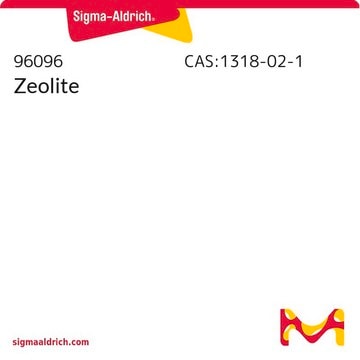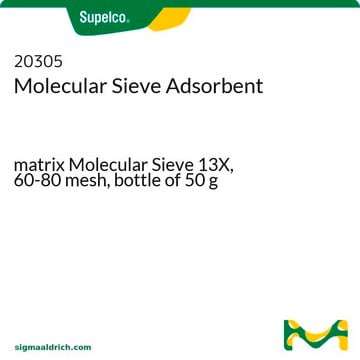22048
κ-Carrageenan
sulfated plant polysaccharide
Sinónimos:
Vegetable gelatin
About This Item
Productos recomendados
origen biológico
plant
formulario
powder
color
white to off-white
viscosidad
5-25 mPa.s, 0.3 % in H2O(25 °C)
solubilidad
H2O: soluble 5 mg/mL (hot)
InChI
1S/C24H38O25S2/c25-1-5-14(48-50(33,34)35)9(27)10(28)22(42-5)45-16-8-4-40-19(16)12(30)23(44-8)47-20-13(31)24(43-6(2-26)17(20)49-51(36,37)38)46-15-7-3-39-18(15)11(29)21(32)41-7/h5-32H,1-4H2,(H,33,34,35)(H,36,37,38)/p-2/t5-,6-,7-,8-,9-,10-,11-,12-,13-,14+,15+,16+,17+,18-,19-,20-,21+,22+,23-,24+/m1/s1
Clave InChI
ZNOZWUKQPJXOIG-XSBHQQIPSA-L
¿Está buscando productos similares? Visita Guía de comparación de productos
Categorías relacionadas
Descripción general
Aplicación
Otras notas
Código de clase de almacenamiento
11 - Combustible Solids
Clase de riesgo para el agua (WGK)
WGK 2
Punto de inflamabilidad (°F)
Not applicable
Punto de inflamabilidad (°C)
Not applicable
Certificados de análisis (COA)
Busque Certificados de análisis (COA) introduciendo el número de lote del producto. Los números de lote se encuentran en la etiqueta del producto después de las palabras «Lot» o «Batch»
¿Ya tiene este producto?
Encuentre la documentación para los productos que ha comprado recientemente en la Biblioteca de documentos.
Nuestro equipo de científicos tiene experiencia en todas las áreas de investigación: Ciencias de la vida, Ciencia de los materiales, Síntesis química, Cromatografía, Analítica y muchas otras.
Póngase en contacto con el Servicio técnico

![Poly[(R)-3-hydroxybutyric acid] natural origin](/deepweb/assets/sigmaaldrich/product/structures/129/476/7d1c924b-f644-4889-a2d6-d7a923ce382c/640/7d1c924b-f644-4889-a2d6-d7a923ce382c.png)






